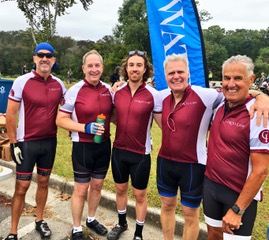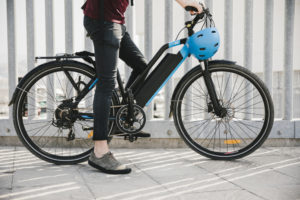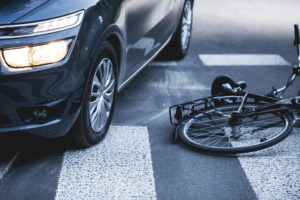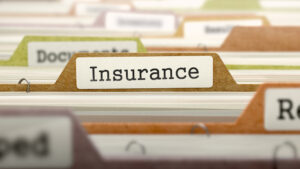
May is National Bike Month, promoted by the League of American Bicyclists and recognized in communities around the country. Established in 1956, National Bike Month is a chance to showcase the many benefits of bicycling, encourage more folks to give it a try, and promote nationwide bike safety.
Bicycling is a great way to exercise and commute while reducing vehicle emissions’ harmful impact on the planet. When the COVID-19 pandemic rocked the U.S. and the world, biking became even more popular as people tried to avoid the risks of crowded public transportation. Even though cycling has many benefits, it carries inherent dangers. Many Americans are injured and killed in Virginia and across the country each year. Knowing and following Virginia bicycle laws and safe-cycling tips are crucial to limiting risks when sharing the road with motor vehicles.
Compared to other states, Virginia has some of the best bicycle safety statistics in the U.S., currently ranked seventh in the nation on the Bike Friendly State report card. But the dangers are still there. Distracted driving and speed are the major causes of serious and fatal accidents. Following Virginia bike laws can lower the risks of injuries. With Virginia recently enacting the Bicycle Safety Act (VBSA) that came into effect on July 1, 2021, it is clear that making roads safe for everyone is a priority.
Why are Bike Laws Important?
Cyclists don’t have the protection of a vehicle or the safety features like a seatbelt and airbags. Because of this, bike accidents can cause severe injuries, including traumatic brain injuries (TBIs), broken bones, and organ damage.
In general, cyclists must follow the same rules drivers in vehicles do—they must stop at stop signs, yield to pedestrians at crossings, use dedicated turn lanes, follow traffic light signals, and signal turns and stops using hand signals. While there are several Virginia bike laws, these five are some of the most important. Knowing them could save your life.
#1: Lights and Reflectors
Bicyclists can be difficult for drivers to see, especially when it’s dark and weather conditions are poor. Between sunset and sunrise in Virginia, pursuant to Virginia Code § 46.2-1015, bicycles need to have at least one white headlamp that is visible from 500 feet ahead. They must also have a red reflector on the back of the bike that is visible from 600 feet behind. Using these lights and reflectors is vital to ensure that others on the road can see cyclists, allowing drivers to safely pass cyclists and make turns without causing a collision.
#2: Helmet Use
While it is unfortunate that the Commonwealth of Virginia does not require children to wear helmets when riding a bicycle throughout the state, many counties and cities throughout Virginia passed local ordinances that do require this. Fairfax County Code § 82-6-38.1, the City of Alexandria Code § 10-7-12, and Arlington County Code § 14.2-64 all require anyone aged 14 (15 in Fairfax County) or under to wear a properly fitted helmet when riding a bike in their respective jurisdictions. This includes kids in child seats and those being towed in a carrier. It is still recommended that everyone who bikes in Virginia wear a helmet. Helmets save lives, and statistics show they greatly minimize the risks of traumatic brain injuries and death from bicycle crashes.
Nationwide, 843 cyclists were killed in accidents with motor vehicles in 2019. Not all of these accidents reported whether a helmet was worn or not, but a confirmed 520 fatalities involved people who did not have a helmet on. In comparison, only 127 fatalities were reported to have worn a helmet at the time of the crash. These numbers paint a clear picture of the importance of wearing a helmet, no matter your age.
#3: Signaling Turns and Stops
Just like motorists, Virginia Code § 46.2-849 requires a cyclist to signal when making a turn and stopping. As shown in the image below, cyclists use their arms to signal their intentions, providing drivers with important information when sharing the road with someone biking. Drivers should then respond accordingly, giving the right of way when applicable and stopping at a safe distance. Cyclists’ turn signals that should be used are: 
Cyclists raise their left arm straight out to the side, parallel with the road, to signal a left turn. For right turns, there are two options: raise the right arm straight out to the side parallel with the road, or hold out the left arm with a bent elbow so that the hand is pointing straight up. For making a stop, cyclists must hold out their left arm, elbow bent, so that the hand points down at the road.
#4: Headphone Use
Some vehicles are quiet, and some roads are loud and busy. Being able to hear while biking can help prevent a bicycle collision.
To reduce distractions and encourage cyclists to be aware of their surroundings, Virginia enacted code § 46.2-1078, which states that a bicyclist cannot wear headphones or earbuds in both ears. This ensures that bicyclists can hear what is happening around them, including approaching cars, sirens, horns, and other road sounds. Maintaining focus and attention is essential for cycling safety, so make sure you can hear your surroundings when riding a bicycle.
#5: Cycling Side-by-Side
In July 2021, the Virginia Bicycling Safety Act came into effect, and one of the most important changes to bike laws is how two cyclists are allowed to travel together. Previously, cyclists had to ride in single file when cars were around or approaching. Under Virginia Code § 46.2-905, cyclists can ride side-by-side, two abreast, in one lane.
This bike law was introduced to increase the visibility of cyclists for motorists, which is especially important amidst the increase in Virginia bicycling fatalities. Greater visibility means improved road safety for everyone. It also means that parents cycling with a child can now keep their child on the inner part of the lane, creating a more prominent presence on the roadway for drivers to see.
A Driver’s Responsibility Towards Bicyclists
In addition to the laws that cyclists must follow, there are clear rules for drivers too. A notable change introduced by the Virginia Bicycling Safety Act, under Virginia Code § 46.2-839, requires drivers to pass bicyclists at least three feet to the left of the cyclist. If this cannot be done, the driver must safely change lanes when passing bicyclists. Having motorists move over and give cyclists a wider berth improves safety and lessens the risk of collisions.
Virginia Bicycle Accident Legal Options
The reality is that following the rules of the road, bicycle laws, and cycling best practices affect how many accidents occur and their degree of severity. But if you are injured in a bike accident in Virginia, it is important to know your legal options.
 Proving negligence on the part of the motorist involved in the accident or filing a claim for defective equipment is difficult, and the legal process is complex. Hiring a Virginia bike accident attorney will give you the best chance at receiving the compensation to which you are legally entitled and hold those at fault accountable.
Proving negligence on the part of the motorist involved in the accident or filing a claim for defective equipment is difficult, and the legal process is complex. Hiring a Virginia bike accident attorney will give you the best chance at receiving the compensation to which you are legally entitled and hold those at fault accountable.
Tom Curcio is a long-time road cyclist, and Curcio Law has extensive experience with bicycle accident claims. We understand the ins and outs of bike laws and road safety. For more information, call or text us at 703-836-3366, email info@curciolaw.com, or visit https://www.curciolaw.com.

Justin Curcio joined Curcio Law in January 2020. Justin received his J.D. from St. John’s University School of Law in 2015. After passing the Virginia Bar in 2015, Justin was in-house counsel for an insurance defense firm (Allstate/Esurance/Encompass) for over four years before joining Curcio Law. During law school, he worked for the Nassau County District Attorney’s Office and the law firm of Bartlett, McDonough & Monaghan, LLP. Contact Justin at jcurcio@curciolaw.com.














Comments for this article are closed.